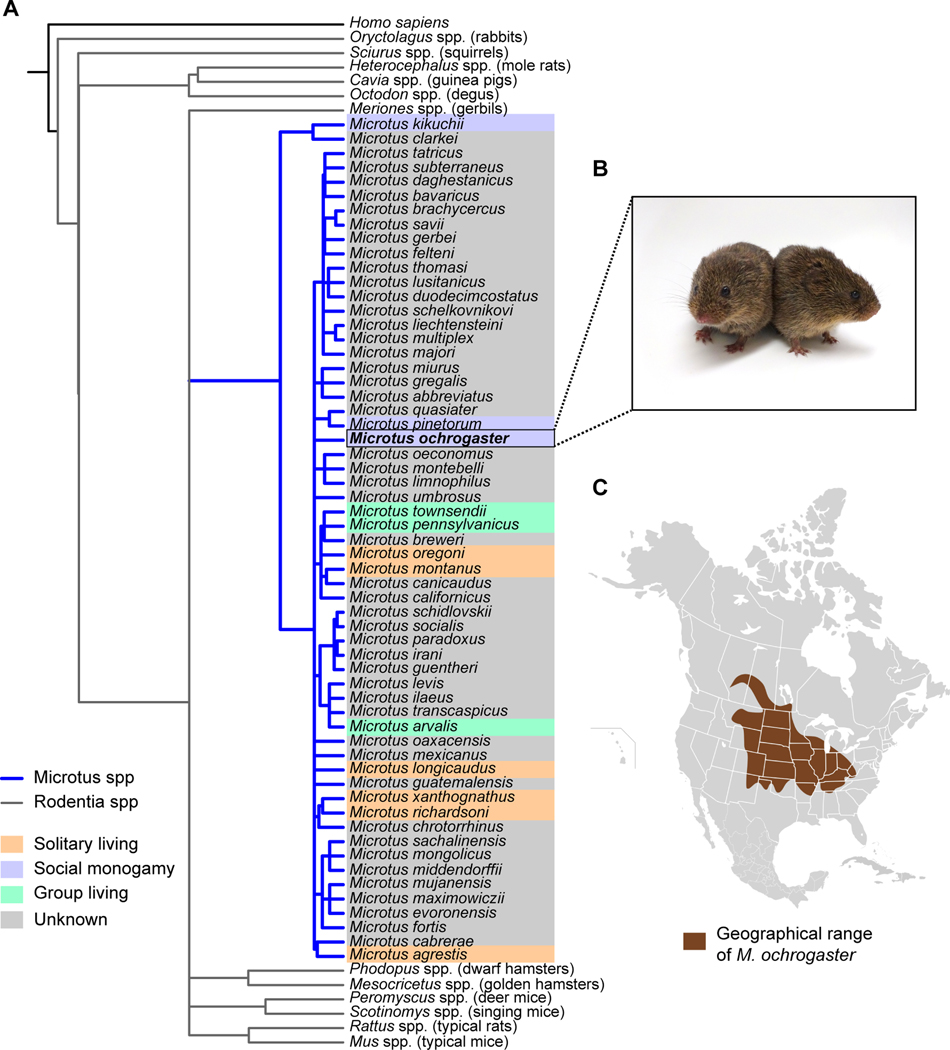Figure 1.
Prairie voles have become popular for studies of social neuroscience, and have many additional advantages and features described in this review. A. Phylogeny of Microtus (blue lines), representative species from other Rodentia groups (gray lines), and Homo sapiens as an outgroup. Phylogenetic data are from a published mammalian supertree (Fritz et al., 2009), and the tree was plotted with R software (R v3.5.3) using the ‘ape’ package (Paradis and Schliep, 2019). Social systems for Microtus spp are color coded based on previously published descriptions (Lukas and Clutton-Brock, 2013). B. Laboratory bred prairie voles (Image ©Beery Lab). C. Distribution of prairie voles in North America. (Image by Simon Pierre Barrette / CC BY-SA 4.0, adapted from (Naughton et al., 2012).

